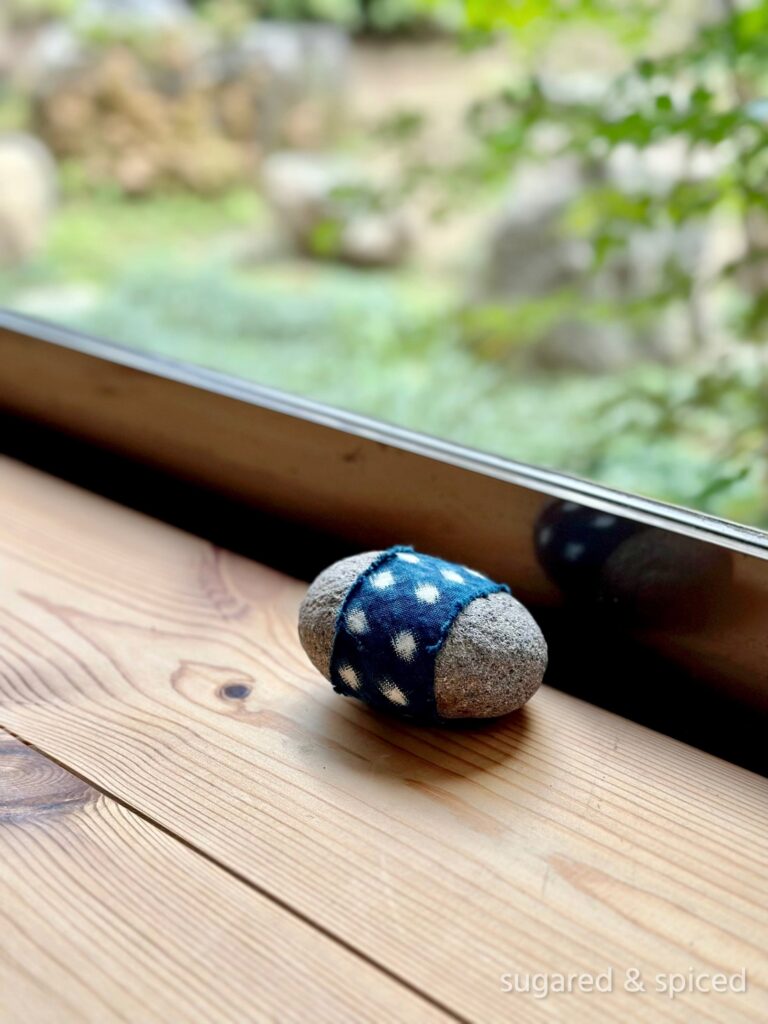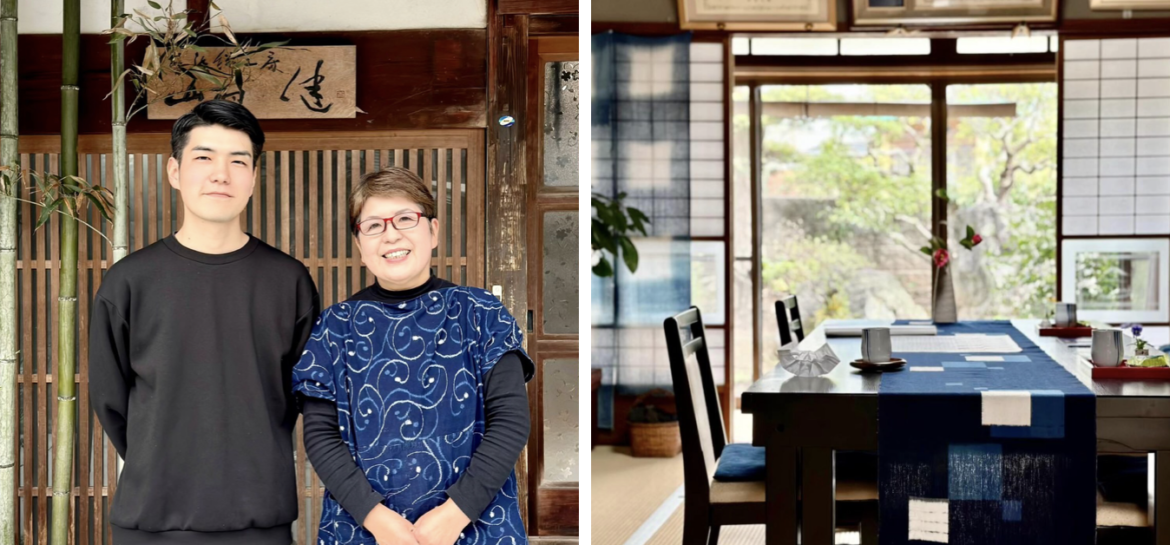
我們在八女入住的 Craft Inn 是一間十分獨特的旅宿,精心翻修過的老屋中融入了九州各地職人製作的手工藝品,讓住客能夠通過親手使用、體驗這些美麗的日常用品,來了解當地的風土文化。其中最令我印象深刻的是由藍染絣工坊 “山村健” 所製作的藍染掛毯和藍染木桌。入住的第二天,我們便開車前往山村健工坊體驗藍染,在上百年老房子前熱情迎接我們的是工坊的第五代傳人山村研介和他的母親。
Amongst all the local crafts we experienced while staying at Craft Inn, the selection of indigo products – tapestry, cushion covers, wooden table created by Aizome Kasuri Kobo, made the most impression on us. The very next day, we took a small detour to visit this hundred-year-old workshop (founded in 1981) to learn more about the process of indigo dye.
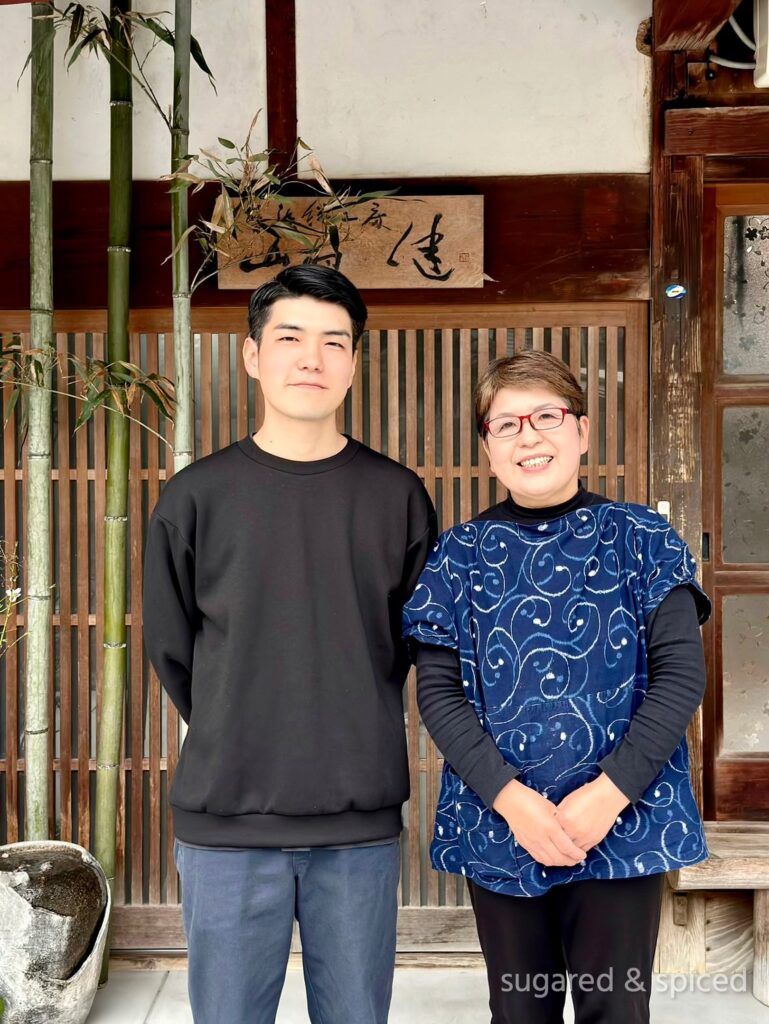
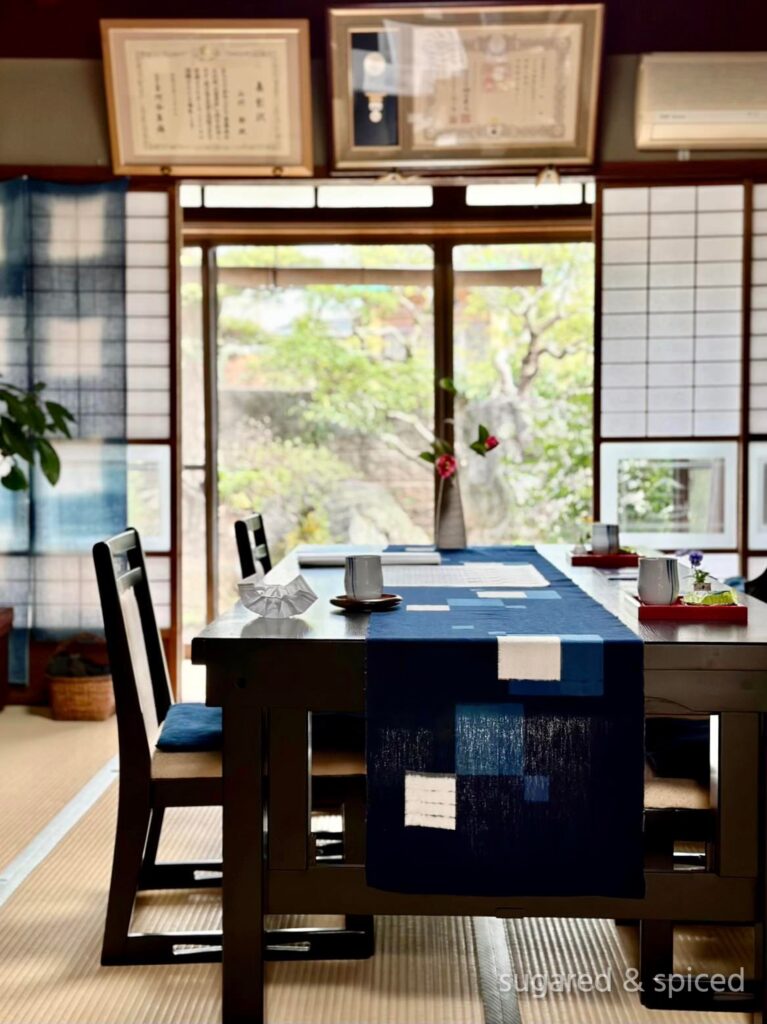
山村先生先介紹了製作藍染絣的過程。簡單來說就是將棉質織線浸染成藍色,再用紡織機編織成布,但過程其實非常復雜 – 首先要設計圖案,預想好織線的留白處,將留白部位纏起後再浸染,還要考慮線收縮問題…是個需要反復實驗,很吃經驗的絕活。
In front of Aizome Kasuri Kobo’s traditional old house, we were warmly greeted by the atelier’s 5th generation owner Kensuke Yamamura and his mother. We were led into their cozy living room, and the workshop started with an introduction of the Kurume kasuri, a process that involves no less than 30 steps from design, tying, dyeing, to weaving, taking three months to complete.
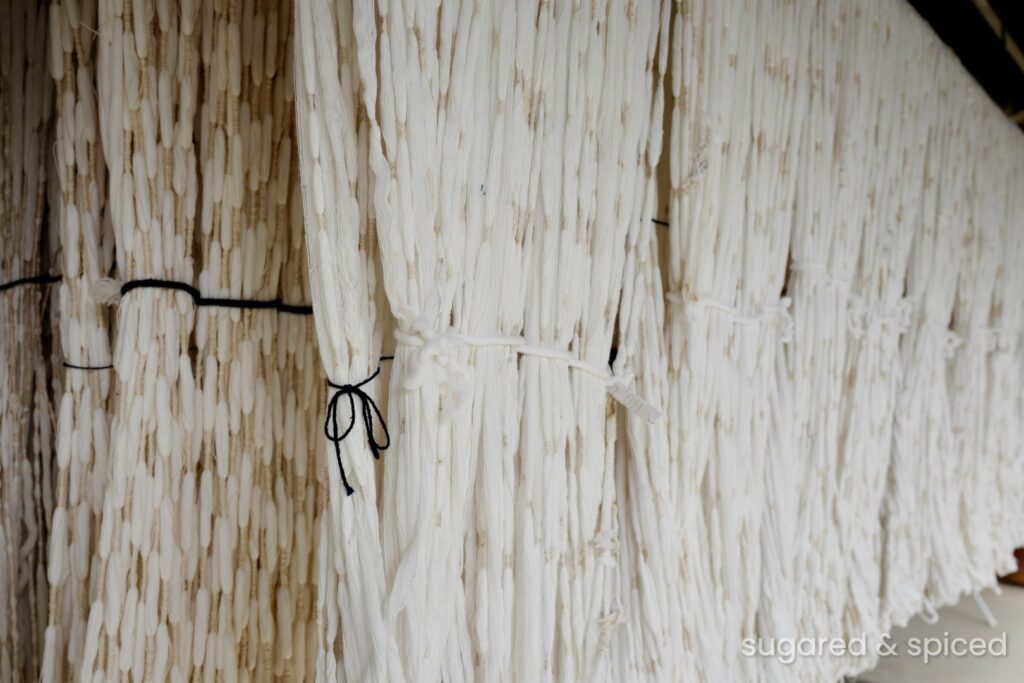
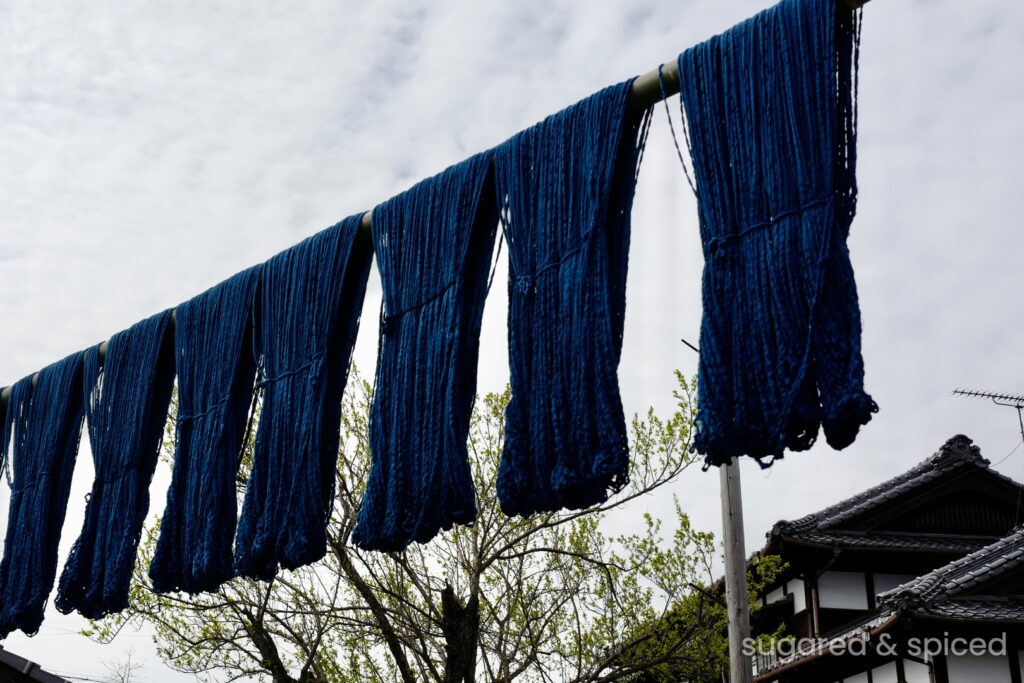
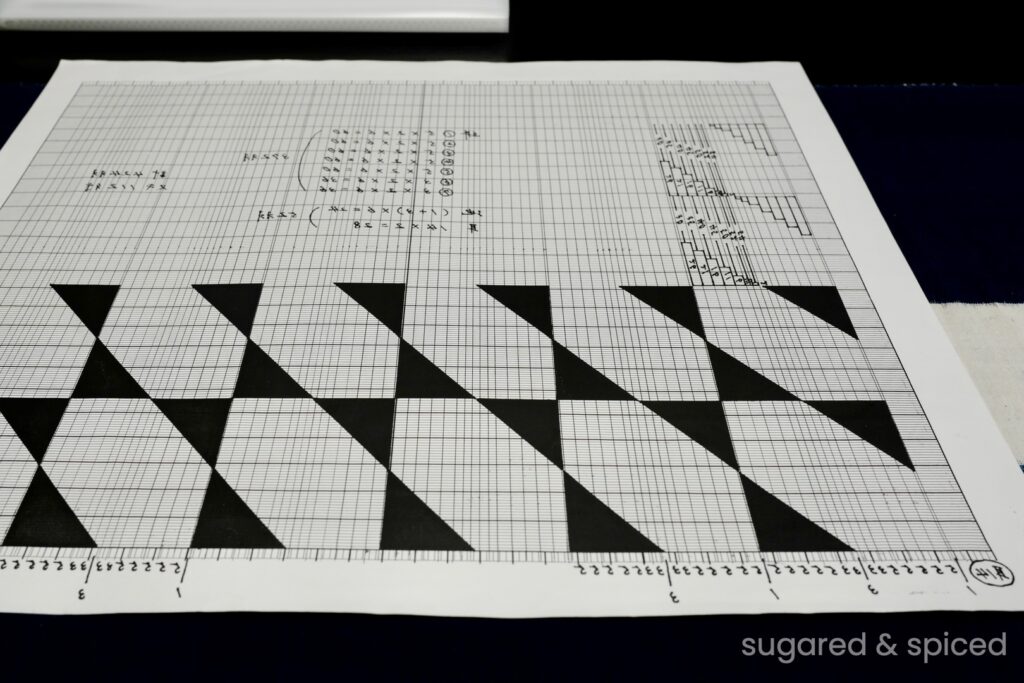
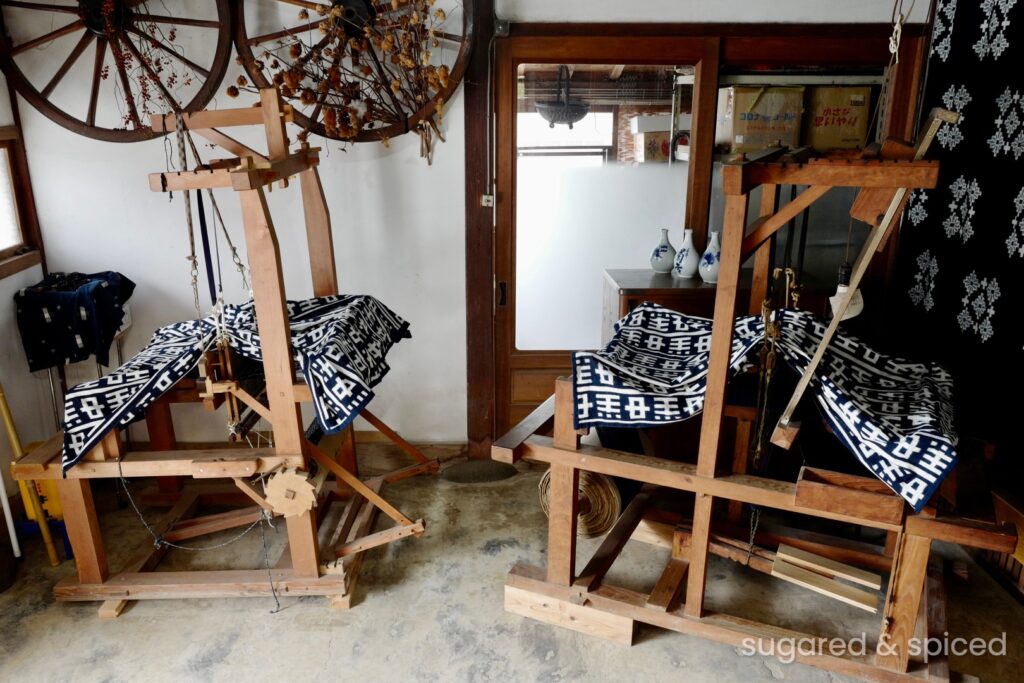
經過精密計算、浸染、和編織,才能製作出如此美麗而耐用的藍染布料。
By tying yarn at specific intervals, dyeing the yarn into various gradations of indigo blue, and finally hand weaving them into geometric patterns, one can create truly beautiful and durable fabrics that can withstand the passage of time.
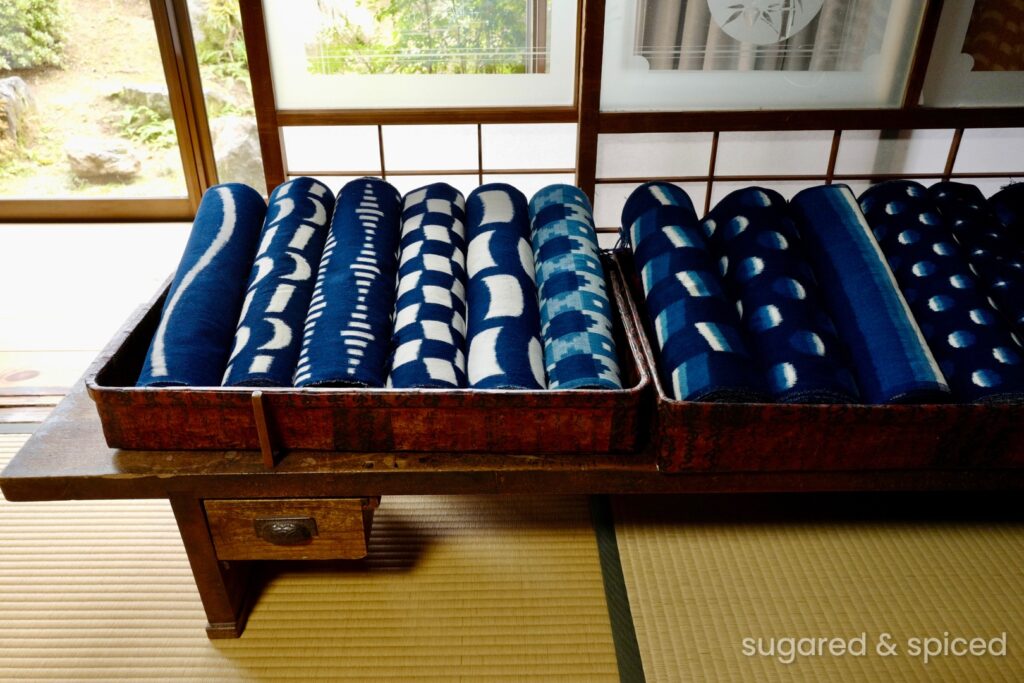
接著參觀染房並體驗染布。
We then had a tour of the dyeing warehouse, where we would have a chance to try our hands on indigo dyeing.

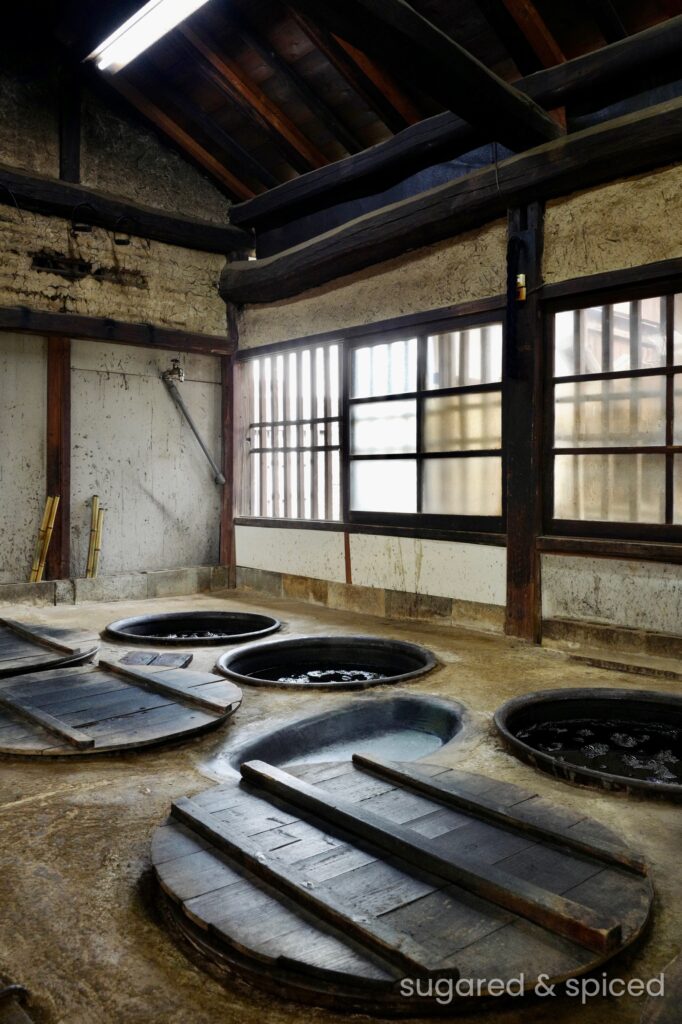
為了便利和降低成本,現今有很多藍染工廠已轉用化學染料,但山村健工坊仍堅持用來自日本徳島的天然染料,就是來自下圖中這個不起眼的植物。
Nowadays, a chemical dye called Indigo Pure is commonly used worldwide, but Aizome Kasuri Kobo continues to use natural dye derived from sukumo (dried and fermented indigo leaves) cultivated in Tokushima.
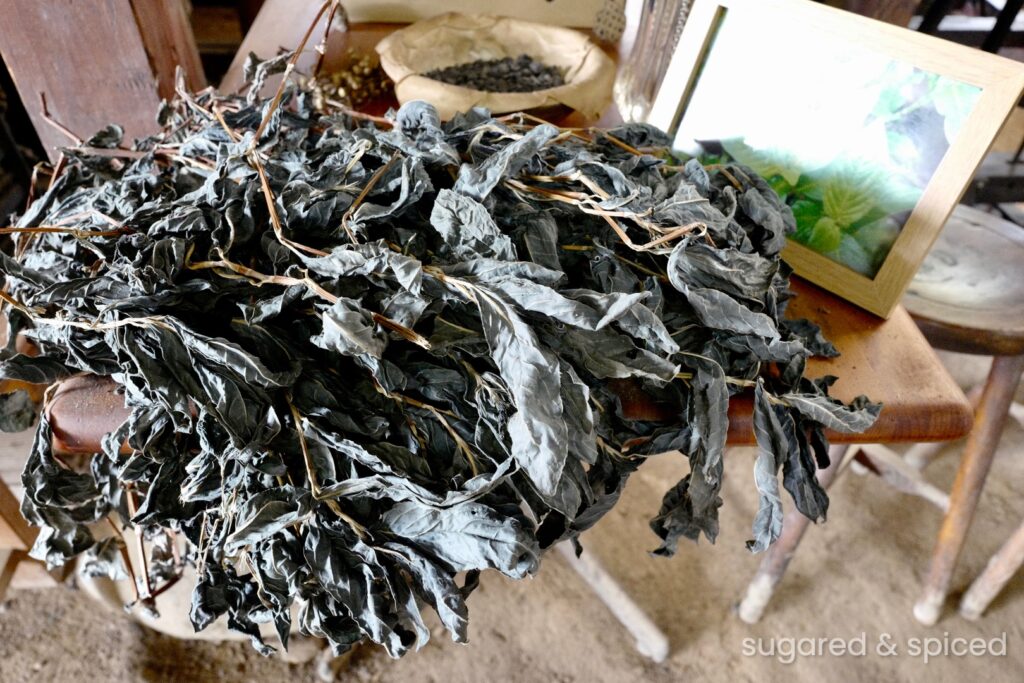
染布中。過程中山村先生會順帶分享一些趣事,比如他小時候曾整個人掉到染缸裡面過 
During the dyeing process, Yamamura-san shared a few funny anecdotes of growing up in Kurume kasuri atelier, such as falling into one of the huge dye baths as a kid…
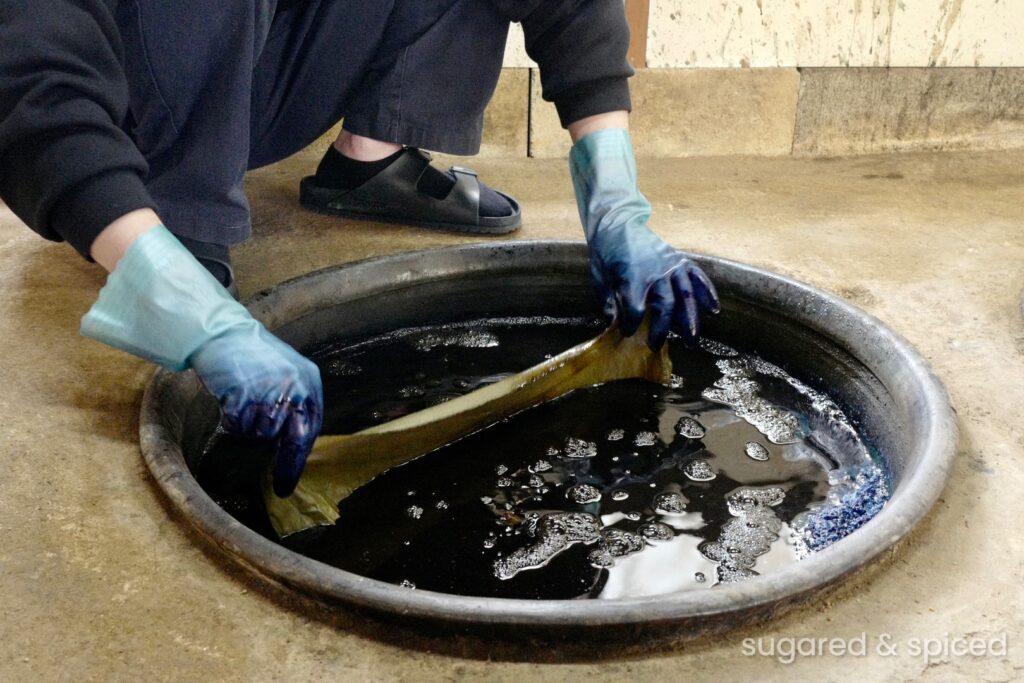
親自體驗過才知道原來剛經過藍染的布料是茶色的,得經過水洗過後才會變藍。蛻變的過程很神奇 – 原本看似貌不驚人的茶色布料,經過水洗後居然會呈現出如此靚麗的色彩!像魔法一般。
Freshly indigo dyed fabrics are actually brown, and after rinsing in water, the humble color turns into this vibrant blue. Pure magic!
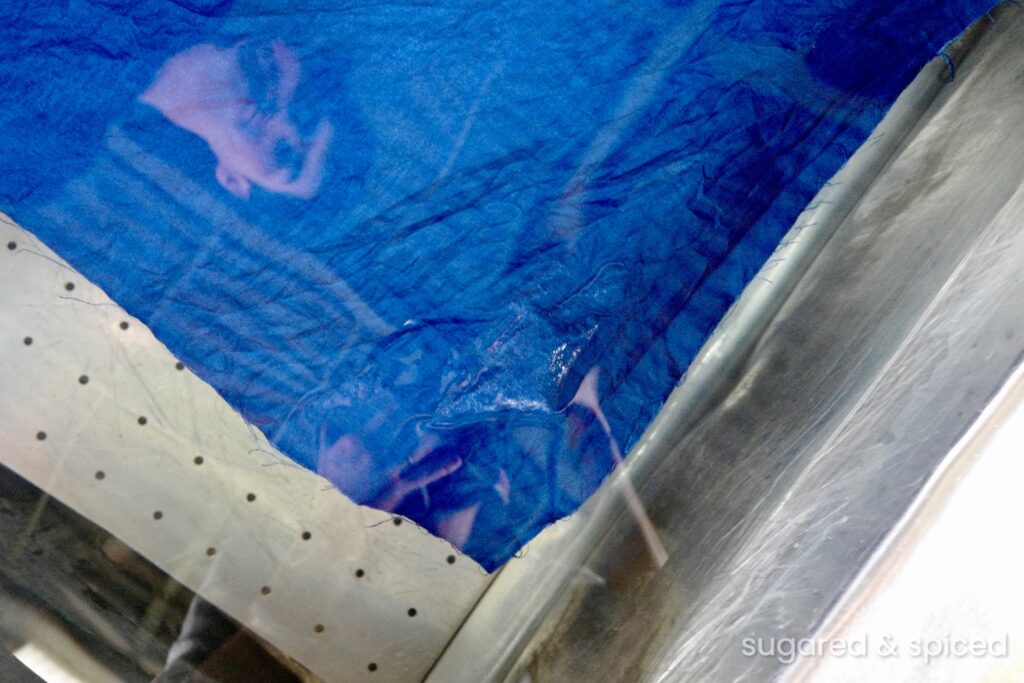
在等待藍染布料燙乾燙平的同時,山村先生的母親為我們準備了她自製的巴斯克起司蛋糕,還有應該是我所吃過最美味的amaou草莓。山村先生說因為他們家的草莓都是由農場直送,可以等到完熟再採摘,所以比一般市面上能買到的草莓要更甜美。
While waiting for our fabrics to be ironed and dried, Mrs. Yamamura served us a lovely afternoon tea consisting of her homemade Basque cheesecake and the most delicious amaou strawberries I’ve ever had, delivered straight from a close by farm.
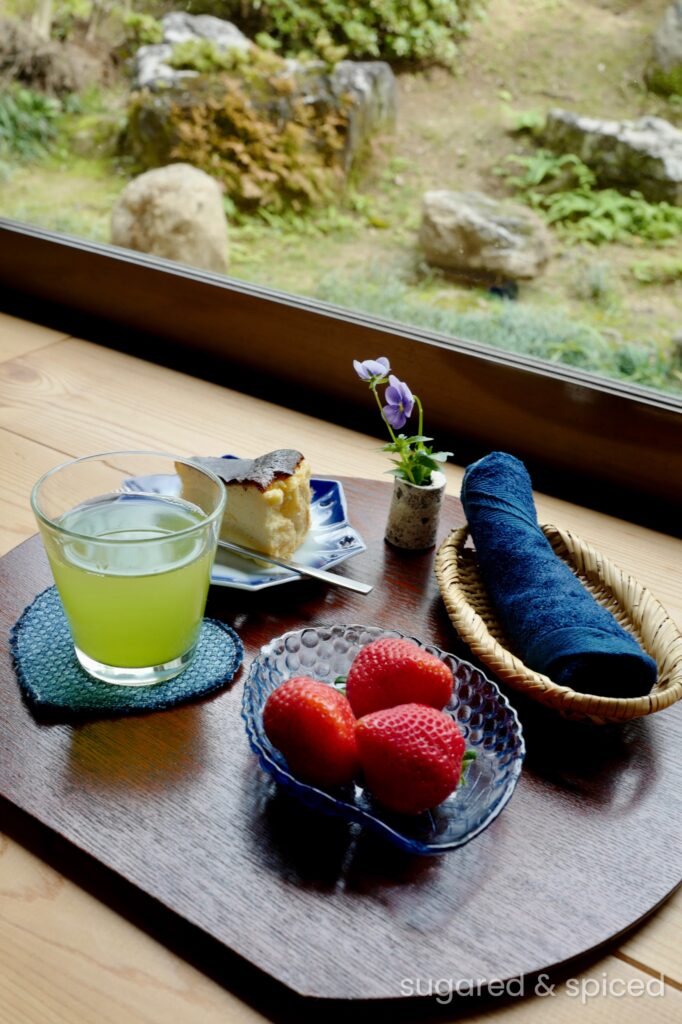
喝完茶的同時,藍染布料也處理好了,可以裝訂在木框上準備帶回家啦。
Then it was time to fixate our indigo fabrics onto wooden boards to take home to.
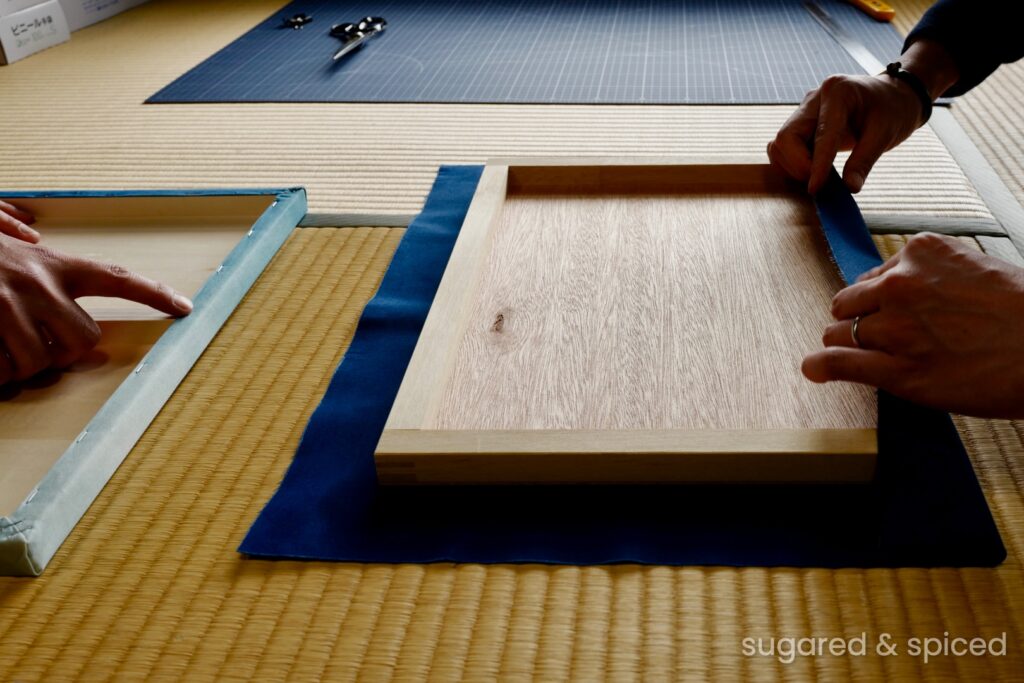
寫上日期和當天的溫度與濕度。
On the back, we noted the date, temperature, and humidity level of the day.
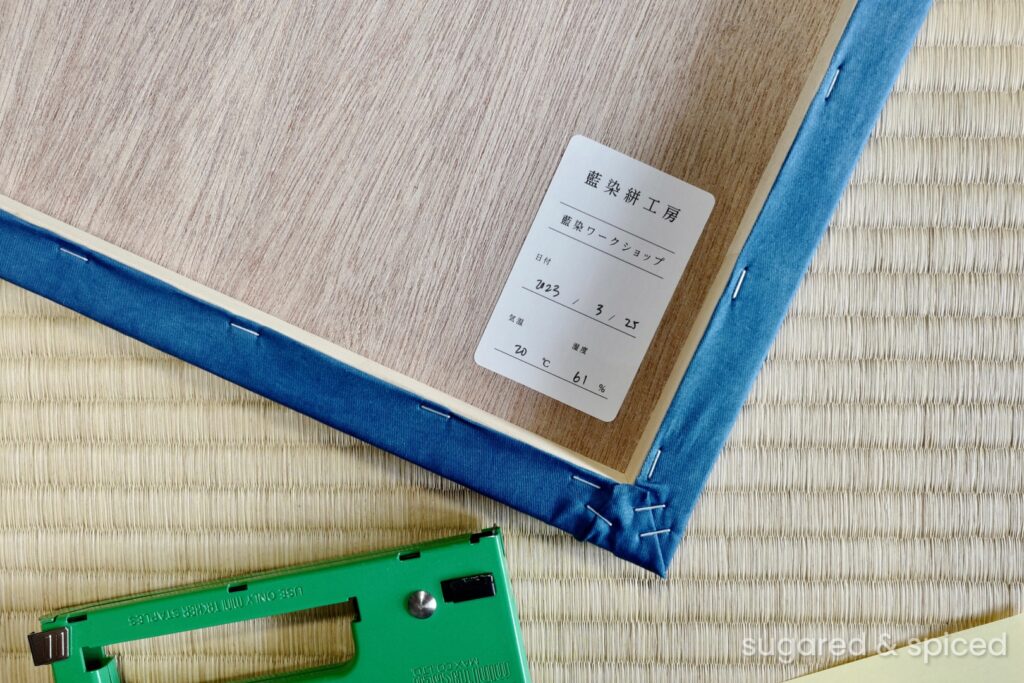
完成!左邊的是我的布料,浸染過三次,顏色較淺;右邊的是A的,浸染六次,顏色更深。山村先生說有時他會將織線浸染五十餘次來做出各種深淺的藍,光想象就知道是非常耗時耗力的工作。他也提到因為植物染料里有許多微生物,是需要被細心照料的 “活” 染料,所以他無法離開太久,甚至無法去遠方旅行…原來,藍染是這樣一個需要奉獻出自我的行業。
And it’s done! My fabric (left), dyed only three times, had a paler blue tone; A’s fabric (right) was dyed six times, showing a darker hue. Yamamura-san sometimes dyes the yarn over 50 times in order to achieve different graduations of indigo color, and I can only imagine how physically intense the work is. He also mentioned that because the indigo dye is “alive” with microorganisms, he refrains from taking long vacations as the microorganisms will die without proper care. Little did I know that indigo dye is a job that requires such dedication!
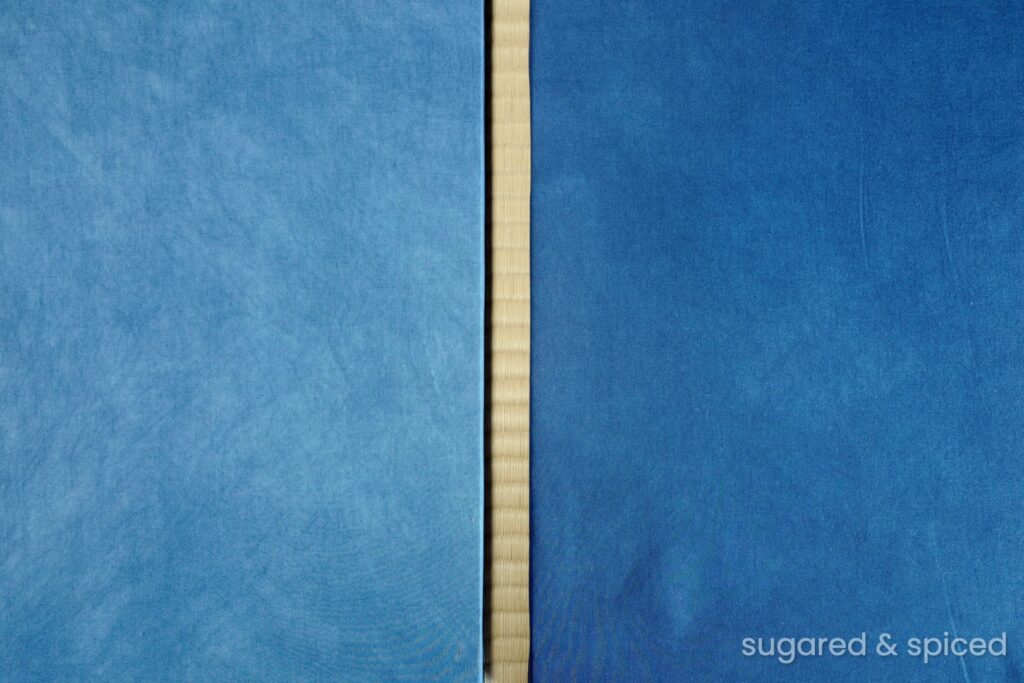
話說回來,Em的作品呢?嗯…其實她在路上就睡著了。感謝山村家借給她的小床墊和枕頭,讓她在這里足足睡了兩小時的午覺,還特地給她準備了一份自己的茶和草莓,真是太貼心了。
On another note, Em fell asleep on the drive to the workshop (though it was a mere 15-minutes from Craft Inn), and had a solid 2-hour nap at the Yamamura house thanks to the family’s generosity in lending her a comfortable mattress and pillow. She got her own mini afternoon tea set too, what a lucky little girl.
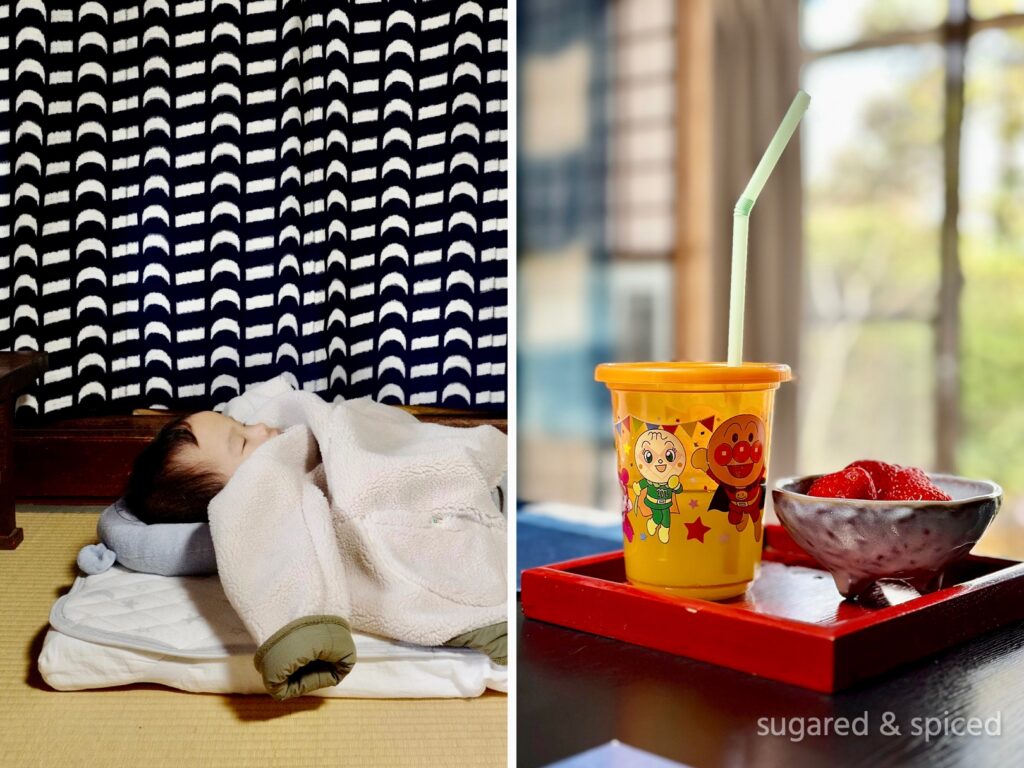
藍染體驗可通過 Craft Inn 或者這個網站預約,非常非常推薦,如果來到八女請一定要來試試。唯一要注意的是需要用日語溝通,如果不會日文的話,也可以通過 Craft Inn 請翻譯(費用另算)。
The indigo dye workshop was such a highlight of our Kyushu trip, I highly recommend trying it if you make your way to Yame (can be reserved via Craft Inn when you book your stay, or via this website). The workshop is done in Japanese, but a translator is available for hire if you need. For more information on Aizome Kasuri Kobo, click here (website in English).
